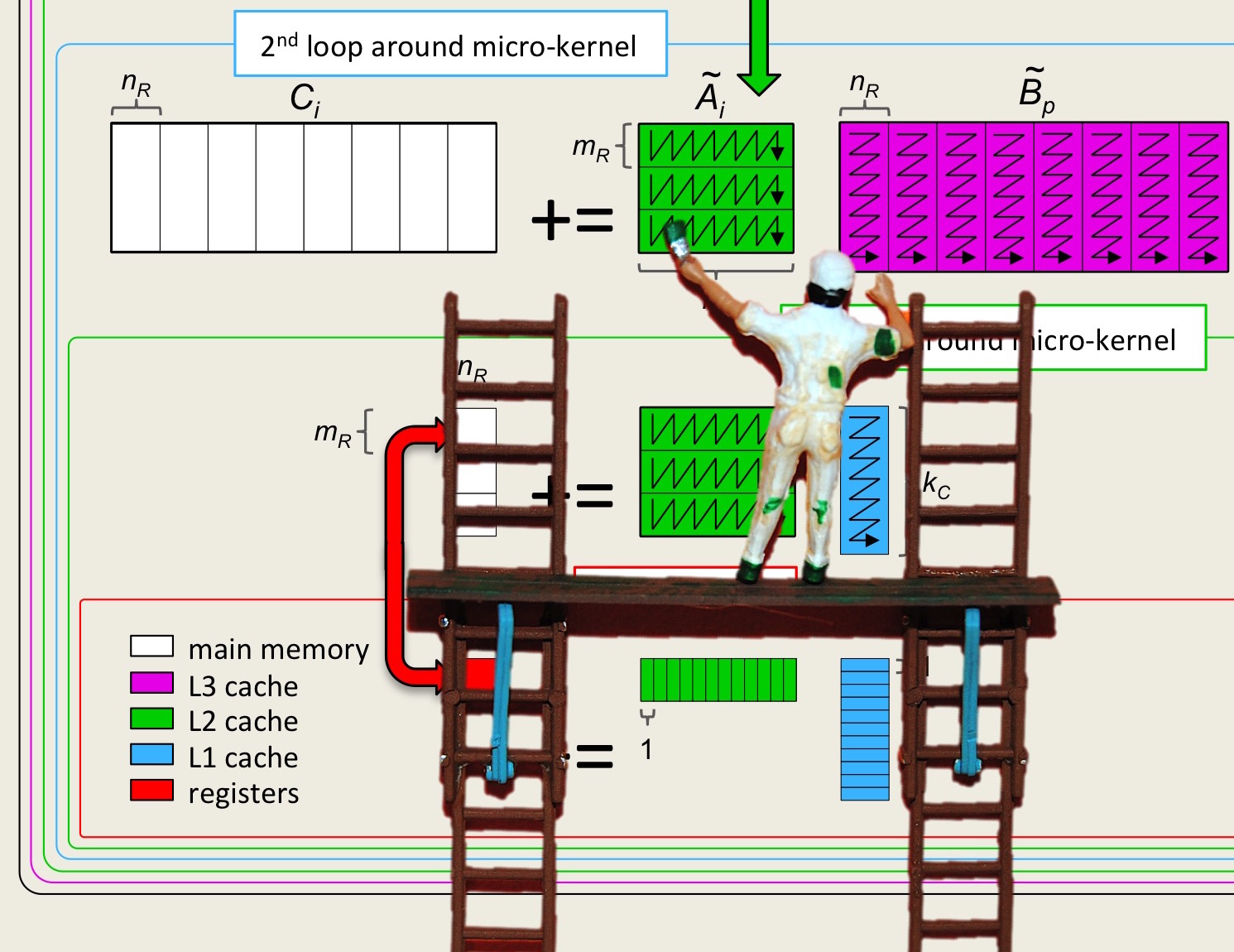Unit 1.3.1 Notation
¶In our discussions, we use capital letters for matrices \(( A, B, C, \ldots )\text{,}\) lower case letters for vectors \((a, b, c, \ldots )\text{,}\) and lower case Greek letters for scalars \(( \alpha, \beta, \gamma, \ldots )\text{.}\) Exceptions are integer scalars, for which we will use \(k, m, n, i, j, \) and \(p \text{.}\)
Vectors in our universe are column vectors or, equivalently, \(n \times 1 \) matrices if the vector has \(n \) components (size \(n \)). A row vector we view as a column vector that has been transposed. So, \(x \) is a column vector and \(x^T \) is a row vector.
In the subsequent discussion, we will want to expose the rows or columns of a matrix. If \(X \) is an \(m \times n\) matrix, then we expose its columns as
so that \(x_j \) equals the column with index \(j \text{.}\) We expose its rows as
so that \(\widetilde x_i^T \) equals the row with index \(i \text{.}\) Here the \(~^T\) indicates it is a row (a column vector that has been transposed). The tilde is added for clarity since \(x_i^T \) would in this setting equal the column indexed with \(i \) that has been transposed, rather than the row indexed with \(i \text{.}\) When there isn't a cause for confusion, we will sometimes leave the tilde off. We use the lower case letter that corresponds to the upper case letter used to denote the matrix, as an added visual clue that \(x_j \) is a column of \(X \) and \(\widetilde x_i^T \) is a row of \(X \text{.}\)
We have already seen that the scalars that constitute the elements of a matrix or vector are denoted with the lower Greek letter that corresponds to the letter used for the matrix of vector:
If you look carefully, you will notice the difference between \(x \) and \(\chi \text{.}\) The latter is the lower case Greek letter "chi."
Remark 1.3.1.
Since this course will discuss the computation \(C := A B + C \text{,}\) you will only need to remember the Greek letters \(\alpha \) (alpha), \(\beta \) (beta), and \(\gamma \) (gamma).
Homework 1.3.1.1.
Consider
Identify
\(\alpha_{1,2} = \)
\(a_{0} = \)
\(\widetilde a_{2}^T = \)
\(\alpha_{1,2} = 1\text{.}\)
\(a_{0} = \left( \begin{array}{r r r} -2 \\ 2 \\ 3 \end{array} \right) \text{.}\)
\(\widetilde a_{2}^T = \left( \begin{array}{r r r} 3 \amp -2 \amp 2 \end{array} \right) \) .
